After open borders extremist, Peter Martin, penned an article earlier this month hailing the “powerhouse” Sydney and Melbourne economies, his Domainfax colleague, Matt Wade, has repeated the dose hailing the “creative class” descending on Sydney and Melbourne:
Big cities across the globe are thriving and Australia’s twin urban giants – Sydney and Melbourne – are no exception. They contributed more than two-thirds of the growth in the Australian economy last financial year and together accounted for about 44 per cent of the nation’s economic output.
In the past decade, Melbourne and Sydney have added 1.75 million people – close to half of the nation’s population growth in that period. And their economic and demographic dominance is likely to grow.
…financial services and professional services – now account for 25 per cent of the Sydney’s economic output and 21 per cent of Melbourne’s. Other knowledge-intensive industries including business services, IT and education (especially in Melbourne) have helped drive growth. These firms are increasingly clustered in the vicinity of the CBD and employ some of Australia’s most productive workers…
Big cities offer things other than employment that are increasingly in demand, such as high-ranking universities, top restaurants, entertainment venues and cultural institutions like museums…
Despite high housing costs, big cities remain a magnet for overseas migrants. Net overseas migration in Victoria and NSW reached all-time highs last financial year and a big share of those new arrivals headed for Sydney and Melbourne…
The economic dynamics favouring big cities are self-reinforcing… As these people share ideas, raise capital and start businesses it stokes demand for even more jobs and amenities. In turn that attracts even more ambitious, well-educated people. It is a cycle that promises to compound the advantages of big cities over time.
Matt Wade and his colleague Ponzi Pete Martin seem to believe that never-ending population growth (immigration) and the associated services and infrastructure spending that it generates is some kind perpetual motion machine. That is, Australia can just keep importing migrants and building infrastructure and housing for them, as well as selling them coffees and mortgages, and the economy will remain strong.
This argument completely ignores the corresponding blow-out in the current account deficit, as well as the escalation of debt, that accompanies such an economic model. It also only considers the economy in aggregate, not on a per person basis, and takes no account of the deleterious broader impacts on living standards.
As I noted earlier this month in my demolition of Ponzi Pete, Sydney and Melbourne have become economic “parasites”.
Neither city pays its way in a trade sense – i.e. their exports are not paying for their imports. This was made abundantly clear by the annual state accounts, which showed the gaping trade deficits that have developed over the past 15-years just as immigration into both cities was ramped-up:
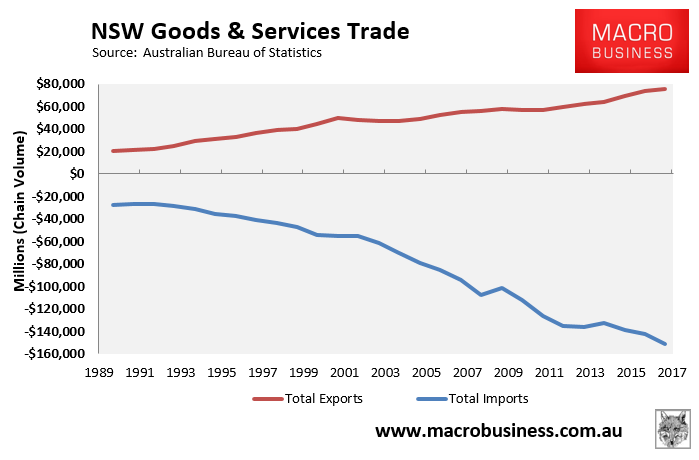
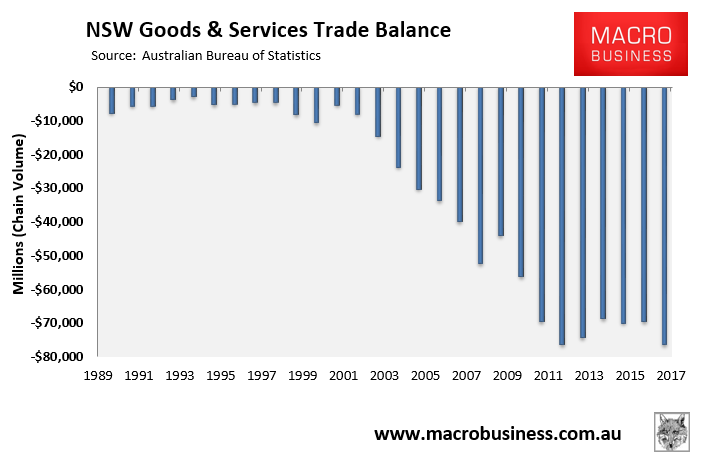
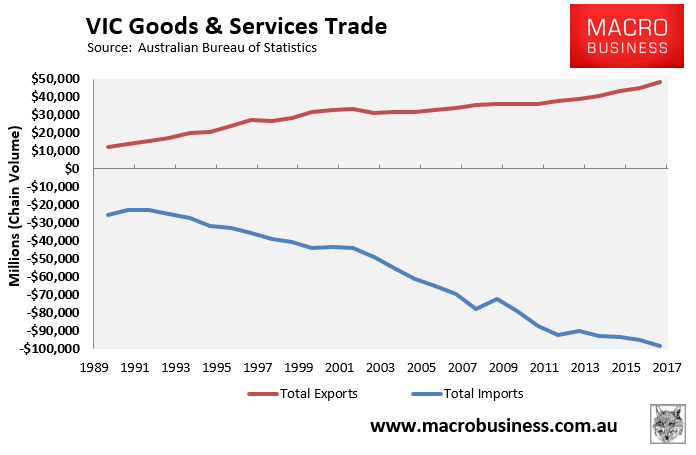
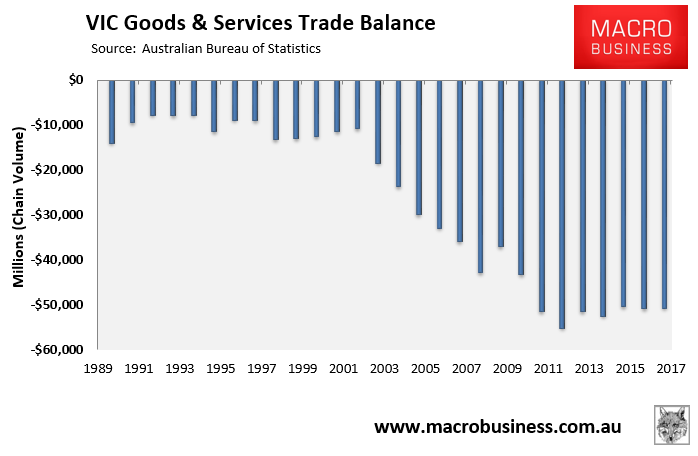
This has led to both cities becoming economic suckholes:
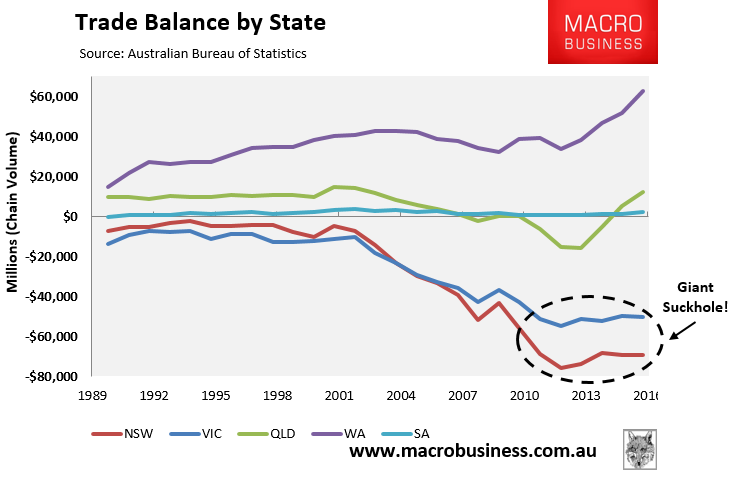
Both Sydney’s and Melbourne’s economies are highly reliant on the population ponzi/housing bubble, each of which requires the accumulation of more imports and debt, and a deteriorating current account balance, rather than genuine sustainable growth.
Australia’s rural and regional areas, by contrast, provide us with not only our food, but also the lion’s share of the nation’s export revenue, which is effectively what pays for Australia’s imports (consumed mostly by city dwellers in Sydney and Melbourne!):
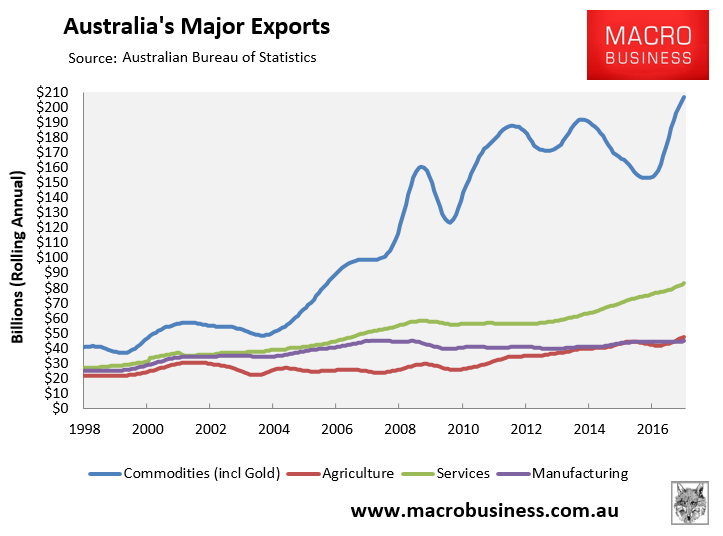
Of course the FIRE and construction sectors located in Sydney and Melbourne love this Ponzi growth model because they make more money (e.g. selling mortgages), which helps to explain the FIRE sector’s explosive growth:
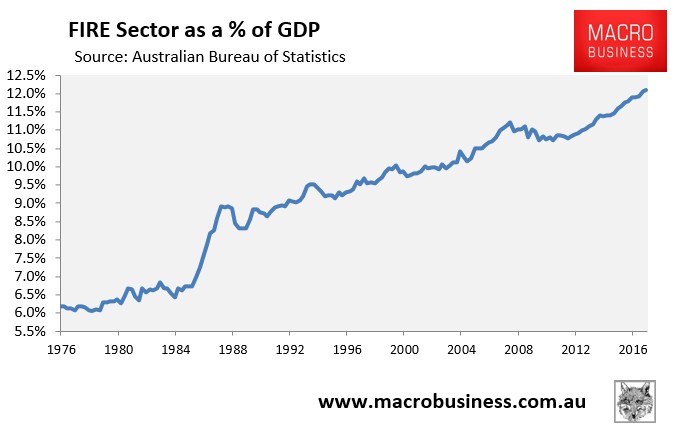
But for ordinary residents located in both cities, this Ponzi growth model is unambiguously negative. Every year, the infrastructure deficits in both cities, along with congestion, housing affordability and overall liveability has gotten worse as more and more people (mostly migrants) have flooded into each city and pushed against bottlenecks amid woeful planning. And the official projections are for both Sydney and Melbourne to experience explosive population growth (immigration) ad infinitum.
The situation is particularly bad in Victoria (read Melbourne), where per capita real gross state product and gross state income have barely increased since the Global Financial Crisis:
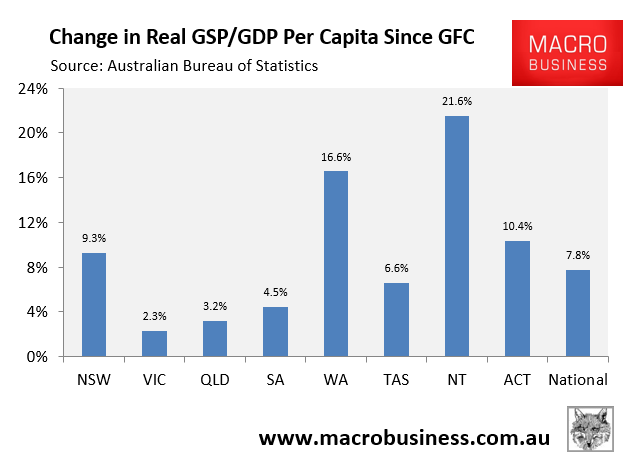
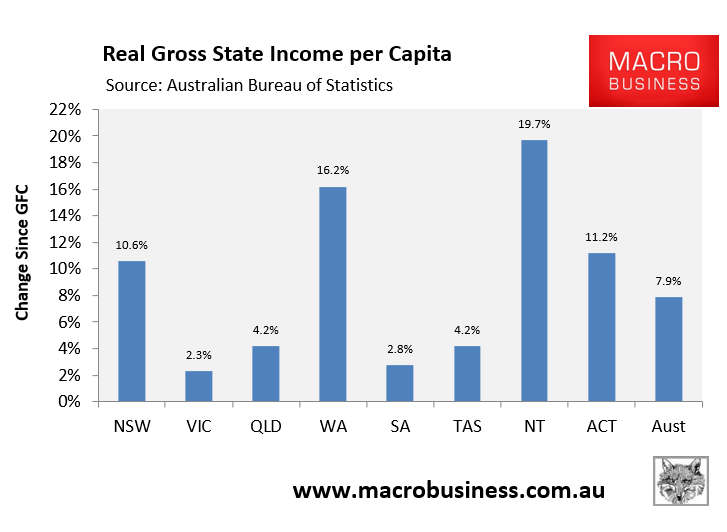
Sure, NSW (read Sydney) has done better on these measures, but it too has some serious problems. In particular, the unprecedented flood of migrants into Sydney, and the associated rising cost of living (e.g. housing) as well as the crush-loading of living standards (e.g. infrastructure), has led to incumbent residents fleeing the city as well as a crashing birth rate:
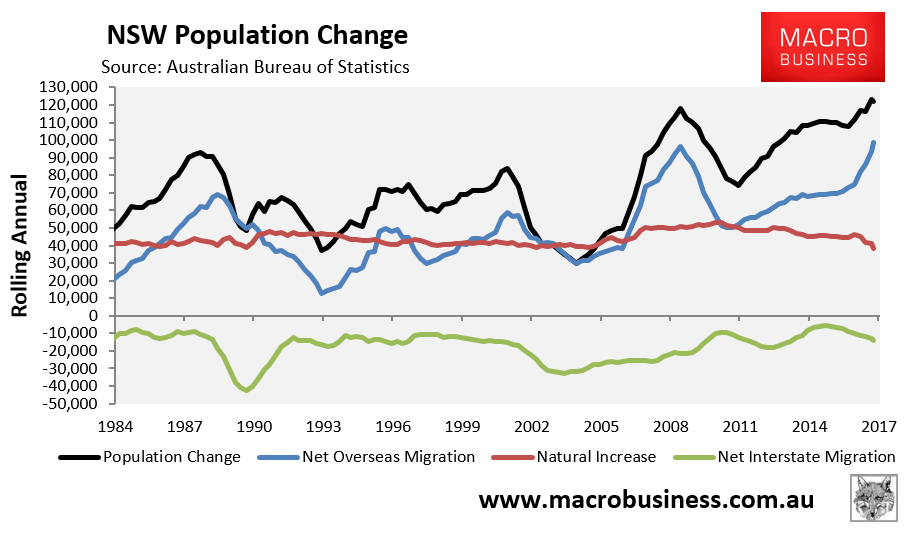
And who could blame them when the cost of a dwelling in Sydney has rocketed to insane levels:
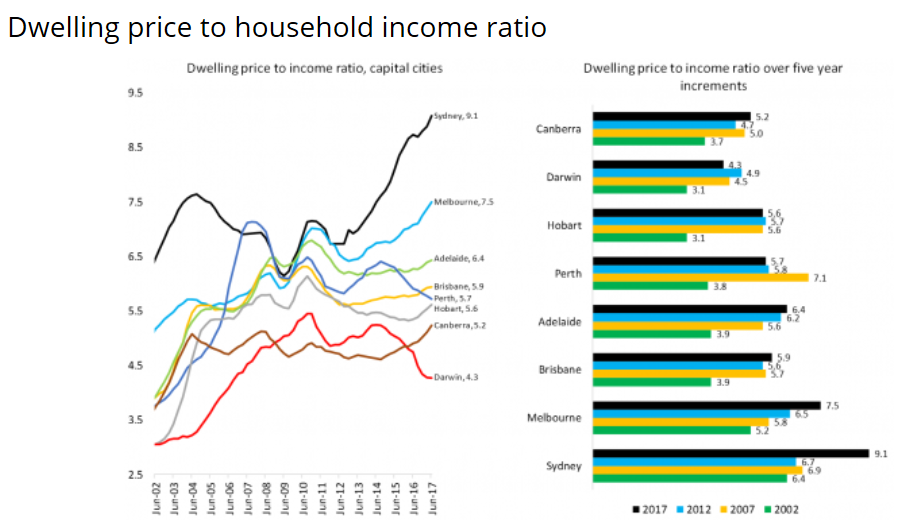
Driving the home ownership rate for those aged under-40 through the floor:
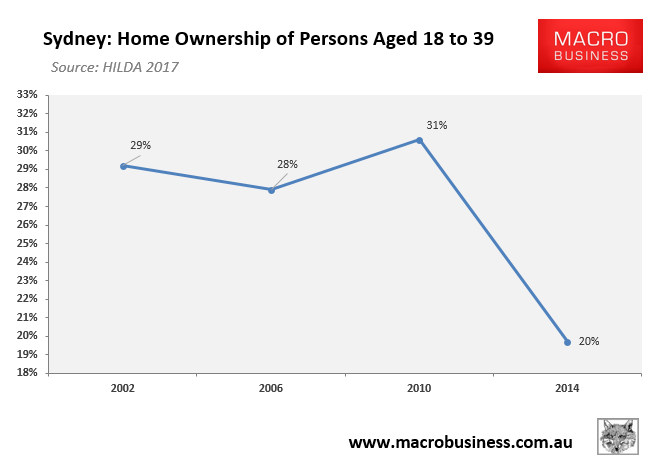
With the proportion of households thrown onto the rental market growing massively:
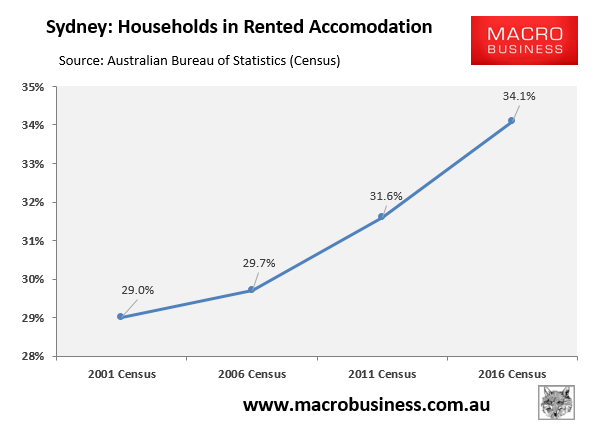
And more than half of lower income households in ‘rental stress’:
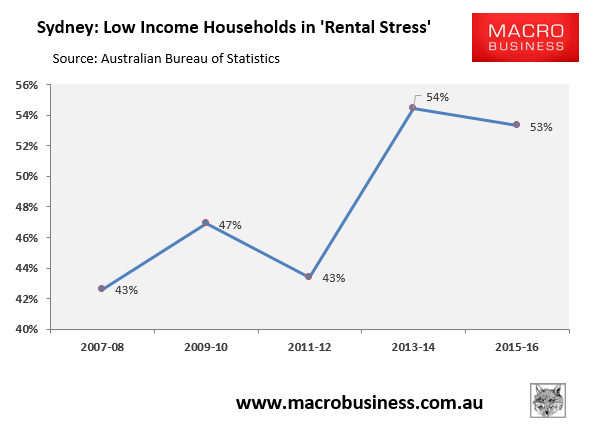
So basically, incumbent young Sydneysiders have been forced to move from where they grew up just so they can make way for the 70,000 to 100,000 migrants flooding Sydney each year!
Both Sydney and Melbourne are operating Ponzi economies that are growing for growth’s sake via mass immigration and debt accumulation, in turn pushing against infrastructure bottlenecks and reducing the living standards of incumbent residents via rising congestion, reduced amenity, and deteriorating housing affordability.
It is precisely the wrong kind of economic model that Australia should be facilitating: one that places headline growth ahead of improving productivity, sustainability and per capita living standards. And one that sucks financial resources from the other states in order to support Melbourne and Sydney’s bulging populations.
Both Peter Martin and Matthew Wade have drunk the Kool Aid in becoming ponzi growth cheerleaders. Bring back Tim Colebatch.

